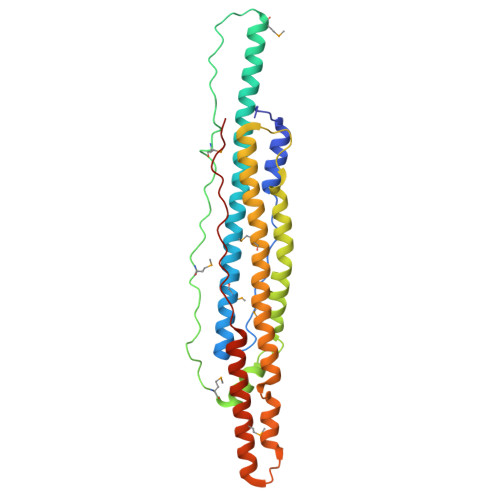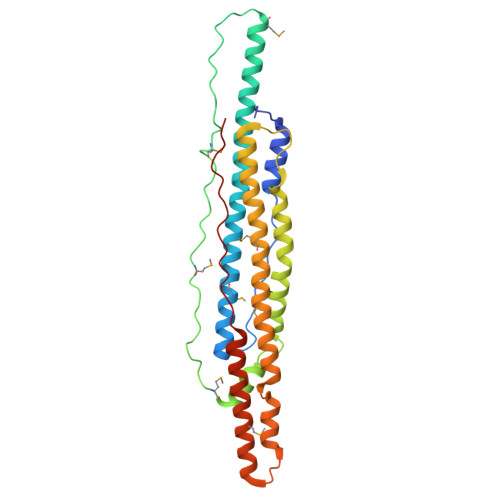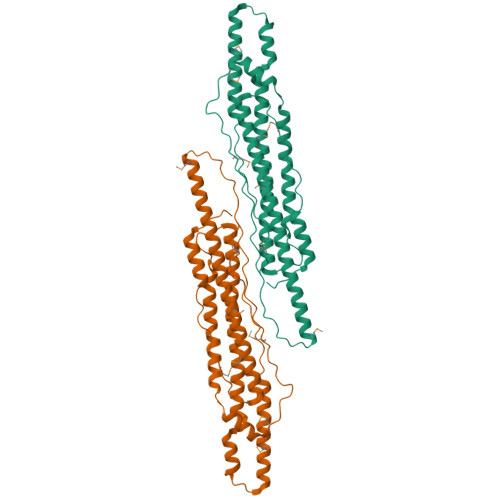Structure of EspB from the ESX-1 type VII secretion system and insights into its export mechanism.
Solomonson, M., Setiaputra, D., Makepeace, K.A., Lameignere, E., Petrotchenko, E.V., Conrady, D.G., Bergeron, J.R., Vuckovic, M., DiMaio, F., Borchers, C.H., Yip, C.K., Strynadka, N.C.(2015) Structure 23: 571-583
- PubMed: 25684576
- DOI: https://doi.org/10.1016/j.str.2015.01.002
- Primary Citation of Related Structures:
3J83, 4WJ1, 4WJ2 - PubMed Abstract:
Mycobacterium tuberculosis (Mtb) uses the ESX-1 type VII secretion system to export virulence proteins across its lipid-rich cell wall, which helps permeabilize the host's macrophage phagosomal membrane, facilitating the escape and cell-to-cell spread of Mtb. ESX-1 membranolytic activity depends on a set of specialized secreted Esp proteins, the structure and specific roles of which are not currently understood. Here, we report the X-ray and electron microscopic structures of the ESX-1-secreted EspB. We demonstrate that EspB adopts a PE/PPE-like fold that mediates oligomerization with apparent heptameric symmetry, generating a barrel-shaped structure with a central pore that we propose contributes to the macrophage killing functions of EspB. Our structural data also reveal unexpected direct interactions between the EspB bipartite secretion signal sequence elements that form a unified aromatic surface. These findings provide insight into how specialized proteins encoded within the ESX-1 locus are targeted for secretion, and for the first time indicate an oligomerization-dependent role for Esp virulence factors.
Organizational Affiliation:
Department of Biochemistry and Molecular Biology, Life Sciences Centre, The University of British Columbia, 2350 Health Sciences Mall, Vancouver, BC V6T 1Z3, Canada; Centre for Blood Research, Life Sciences Centre, The University of British Columbia, 2350 Health Sciences Mall, Vancouver, BC V6T 1Z3, Canada.




















